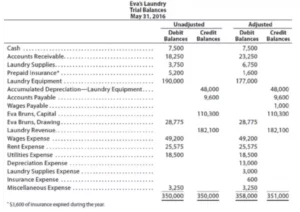Master Your COGS: Learn Cost of Goods Sold Formula 2023
Content

For example, let’s say that a business is putting material costs in COGS but is not splitting out labor that is tied directly to revenue production. This would mean that sales labor and supervisors are in one Payroll expense line item, along with administrative staff. Doing this would overstate margin and overstate overhead expenses. Though COGS can be extremely helpful for businesses to monitor its direct costs and identify cost-saving measures, it also has its limitations.
Cost of goods sold is the total amount your business paid as a cost directly related to the sale of products. Any property held by a business may decline in value or be damaged by unusual events, such as a fire. The loss of value where the goods are destroyed is accounted for as a loss, and the inventory is fully written off. Generally, such loss is recognized for both financial reporting and tax purposes. Cost of goods purchased for resale includes purchase price as well as all other costs of acquisitions,[7] excluding any discounts. In a perpetual inventory system the cost of goods sold is continually compiled over time as goods are sold to customers.
What does the cost of goods sold mean?
https://www.bookstime.com/articles/cost-of-goods-sold only includes the expenses that go into the production of each product or service you sell (e.g., wood, screws, paint, labor, etc.). When calculating cost of the goods sold, do not include the cost of creating products or services that you don’t sell. Cost of goods sold, or cost of sales, is the direct cost of manufacturing or acquiring the products that you sell during a period, such as quarterly or annually. These costs include core components that create your products like the materials and direct labor required in production. “Operating expenses” is a catchall term that can be thought of as the opposite of COGS. It deals with the costs of running a business, but not necessarily the costs of producing a product.
The calculation of COGS is the same for all these businesses, even if the method for determining cost (FIFO, LIFO, or average costing method) is different. Businesses may have to file records of COGS differently, depending on their business license. This article has walked you through what the cost of goods sold is, how to calculate it, and different accounting methods you can choose for your company. Cost of goods sold has always been a key metric for companies, especially manufacturers and merchandisers. Knowing your cost of goods sold meaning and understanding other business costs will allow you to keep them under control.
What Is Cost of Goods Sold?
But, regardless of which method you choose, the best accounting software solutions makes it easy to use COGS in your business accounting. Some software can even help you decide on a method by showing which is most advantageous for you. Let’s say there’s a retail store that starts a year with a certain inventory in stock.
By calculating all business expenses, including COGS, it ensures the company is offsetting them against total revenue come tax season. This means the company will only pay taxes on net income, thereby decreasing the total amount of taxes owed when it comes time to pay taxes. Most accounting software packages are made for qualified accountants. Large businesses set aside huge chunks of their budget to hire an accounting team — it makes sense for their needs. It doesn’t matter to the CEOs of large companies how easy or difficult calculating financial statements is.



